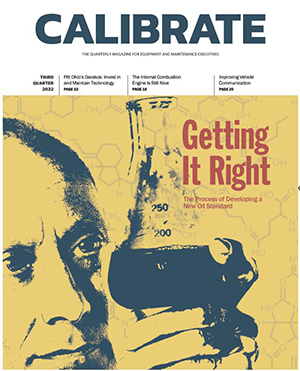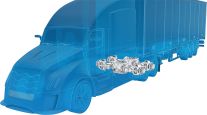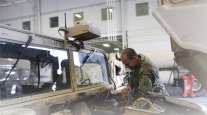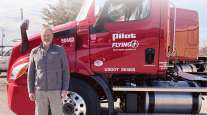Five Questions: Taki Darakos
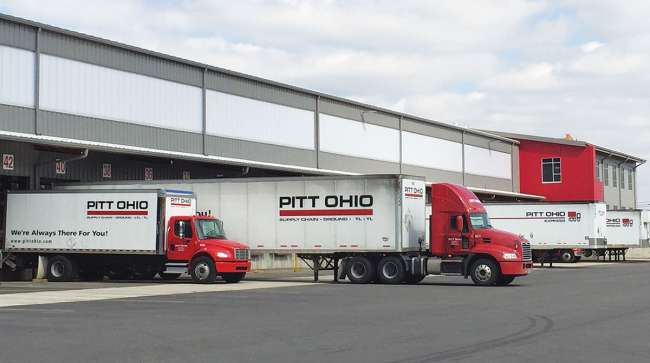
[Find the latest in equipment & maintenance: Explore this quarter's issue of Calibrate]
Taki Darakos joined Pitt Ohio in January 2019 as the vice president of vehicle maintenance and fleet services. He and his team are responsible for supporting Pittsburgh-based Pitt Ohio in all fleet-related equipment activities.
These include managing the fleet life cycle from specification, procurement and maintenance.
Pitt Ohio Transportation Group ranks No. 50 on the Transport Topics Top 100 list of the largest for-hire carriers in North America.
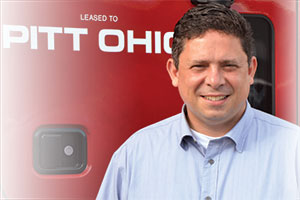
Taki Darakos (Pitt Ohio)
What are the most pressing issues facing fleet maintenance and how are you meeting those challenges as vice president of vehicle maintenance and fleet services?
I think having the right people in place … it is in a way a little bit of old-school maintenance. We do still run equipment out to tractors 1 million miles-plus and straight trucks that have 450,000 miles on them when we pull them out of service. With that comes a lot more need for knowledgeable technicians at the floor level. We have an engine rebuild shop. We have a body shop. You have to have those people in place to really know how to do their repairs right, and help bring those folks around them. Raise them up and bring them along as well. I think it’s an interesting place and time because there’s such a rapid acceleration of technology that puts more and more pressure on the maintenance organizations to keep up. I mean, we’re a very safety-conscious organization, so we’re outfitted with all the collision mitigation and lane-departure and outward-facing cameras. And that’s all great to invest in the technology. But if you if you’re not maintaining it and making sure that it’s working, you’re really defeating the investment, the purpose of what you were trying to accomplish in the first place. So, I think it starts with people. We’re always there for you is our moniker for Pitt Ohio. And I think it really does start with our technicians, our drivers and our dockworkers. So finding those good folks that are going to grow with you and progress that that’s probably my No. 1 thing that keeps me up at night.
What is your philosophy toward building a work culture that motivates technicians?
More Q3 Calibrate
►Getting It Right: Developing New Oil Standards
►Cameras on Windshield Remain FMCSA-Compliant
►Freeze: Trust the Innovation Process
►TMC Corner: Carriers Challenged to Take Action
►Baxter: Internal Combustion Engine's Demise May Be Greatly Exaggerated
Explore the Issue!
I would say that we have a strong culture where there are many folks that spent 41 years ,35 years, 30 years and 20 years with us. I think the challenge as those folks turn the page and they start to retire, is backfilling. They understood what it took to get to this point. So, maintaining that culture and that drive and that focus, it’s got to be instilled in the next generation. Recently — it took about two years — we just recently started a high school [program], the Tech Apprentice program. So, we’ve partnered with a couple of high school technical programs to bring folks in and have them work side-by-side with our technicians and our shops. I think that’s part of the future. And I say “part” because it’s not going to fill all of our needs. I don’t think we can count on stealing technicians away from each other. And we have to start to shift the mindset of how folks view the industry. I would say I was an example of this. Twenty-one years ago, I had folks say, ‘Why would you get into trucking and transportation? You have so many other options.’ But, it’s been a really fulfilling career. So, whether somebody wants to stay on the floor and continue to work as a technician and get involved in the latest and greatest technology, that’s one thing. But if they also have plans to maybe one day get off of the floor and grow into other roles within the organization, it’s very real and very possible here at Pitt Ohio. I have a number of folks on my management team that started out 25-30 years ago, turning wrenches and making the trucks and the tractors and the trailers go. When they weren’t busy doing services, they were delivering freight. And now they’re in roles where they really impact the organization at a higher level. The last piece is just giving everyone a voice. So when we spec equipment, when we change things from a maintenance plan direction, we will include our lead technicians. We’ll have dialogue with our techs to make sure that we’re really not missing anything so that they’re included in the dialogue.
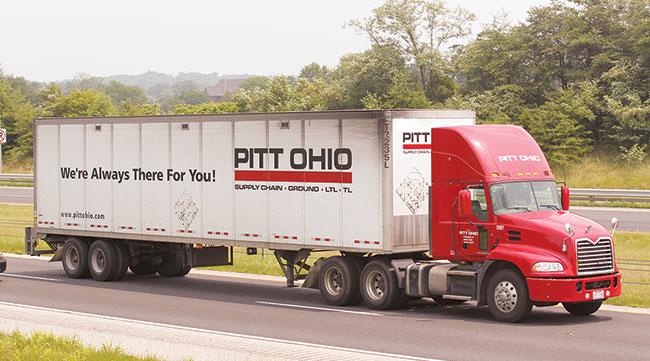
A Pitt Ohio truck travels on Interstate 65 in Sellersburg, Ind. (John Sommers II for Transport Topics)
How do you use technology and management software to operate more efficiently?
I would say it’s like data overrun from a fleet perspective these days. But over the past three years, we’ve been working on improving how we look at data and what data we go after. We have a gentleman on my group that’s more of a data scientist, and he manages our maintenance software database, but he also does a lot of reporting and extracting of information. So he’s come a long way in terms of how to manipulate the data. And he was not an on-the-floor, turn wrenches type of person. He’s a longtime Pitt Ohio employee, but he’s learned on the fly in terms of what’s important, what the team needs to look at, how they want to look at it. And then we’ve also gotten really engaged with our OEM partners. So we’ve pulled in a lot of the remote diagnostics. We’ve set up some APIs. So, where the information comes into a portal, we can digest it, and we can understand it. We’ve built a little bit of support for our maintenance team in terms of a couple of technical advisers that came off the floor. They’re very current in terms of the fleet challenges and the issues, but they’re working closely with our OEM maintenance service partners to identify real needs and issues. We’re using analytical tools to break down data in digestible bites that we can actually act on. And then we’ve got our tech team that is helping our shops and maintenance workforce to correct the problems and fix the issues. So, you know, in a perfect world, I would like to say we know that problem’s going to happen before it happens. We’re not quite there yet, but we’re a lot further ahead than we have been in recent times.
Amid supply chain shortages that are affecting the industry, are you encountering any challenges related to procuring aftermarket parts? If so, how can the industry assuage those concerns?
Want more news? Listen to today's daily briefing above or go here for more info
We’ve got a lot of challenges. 2021 was not for the faint of heart when it came to parts acquisition and keeping the fleet rolling. We’ve been very blessed with having a good trickle of new equipment coming in on a steady basis that could help keep specific locations up and operating. We’ve had some trucks and tractors that maybe have been waiting on parts for two to three months. If I were a small carrier and I didn’t have a flow of new equipment coming in, that would make things really difficult because it’s hard to find rental equipment. 2022 is going to be really challenging for new build slots. Many of the [OEMs] have put fleets on allocation because they just can’t service everybody with all of their needs. We’ve increased our inventory. So, from a parts standpoint, we’ve probably increased 20-25% in terms of the value of the inventory. And that smooths out the bumps and the issues that we’ve come into. We also did some pre-buying. So, in this economy, we’ve seen a rapid escalation of certain parts where we’ve got some warehousing space and we’ve pre-bought maybe six to nine months of inventory to hold fast on pricing and to level things out. So, I’m very fortunate I have a team of eight folks that their whole mission is to make sure that our shops and technicians have the right parts at the right time at the right price to put on the equipment. They’ve done a good job. It’s not perfect, but we’ve done a good job of weathering 2021.
How do you envision the fleet maintenance and repair environment for commercial trucks evolving in the next five to 10 years?
I think there’s a lot of good signs. One, I would say: My team has been really excited to see — like with our Tech Apprentice program — a new generation of folks coming into the industry. And I think there may have been some labeling in terms of, ‘hey, that generation is not really looking to work’ or ‘they’re not willing to get themselves dirty.’ ” I think we see that’s not really the case. I think that the challenge is going to be how quickly the technology is accelerating. With the amount of folks that are in the maintenance space that are retiring and leaving the industry, I think there can be some challenges in terms of knowledge gaps to keep things moving. You do not make a good technician or a good maintenance manager overnight, and it does take time. And I think that’s probably one of the things that’s going to be a challenge today. You can do really well as a technician on the floor and you can probably get as many hours as you want. And that used to be the feeder for folks to come into the maintenance management world. Now, people are less inclined to want to take an after-hours call. So, many folks just rather work on equipment and take care of the truck or the trailer and move on and don’t have to deal with the other parts of it, but it’s going to be a very dynamic time. When you talk about electrification, when you talk about autonomous vehicles, I think the landscape has the potential to be really different from what we know today.


